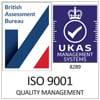The Australian recruitment industry has shifted in the last two years. Agencies that are embracing digital transformation to adapt to the current market dynamics are enjoying rapid growth, with Australian recruitment revenue growing 8% in 2021 to $26.1 billion.
Daxtra's APAC Business Development Manager Kyle Irwin and Bullhorn Account Director Lauren Thom recently held a webinar where they shared their expertise on how recruitment agencies can use automation to make more placements.
Kyle and Lauren examined some of the challenges recruitment agencies are currently facing. They went on to look at how Daxtra's intelligent automation solutions have helped Bullhorn customers automate their recruitment processes and turn their database into their primary source for placing candidates.
You can see how Daxtra’s automation has helped Bullhorn customers here:
Here are some of the key takeaways from the webinar:
The recruitment industry is experiencing new and emerging challenges
New challenges have emerged in the recruitment industry. The 'great resignation' has led to a global talent shortage, while job seekers have more specific requirements for what they seek in a new position. 4,000 global recruitment agencies cite the talent shortage as their top challenge and talent acquisition as their top priority in 2022.
One of the other emerging trends is what candidates expect when they interact with recruitment agencies. Candidates want to interact with agencies on their own terms and have a smooth experience when doing so - 90% of candidates stated that they want the process of finding a job through a recruitment agency to be more streamlined.
These challenges have made it all the more important for recruiters to automate manual processes and spend as much time as possible building relationships with candidates. Particularly if they want to stand out in today's candidate-driven market.
How to embrace digital transformation
To truly embrace digital transformation, there are three main things you should focus on:
- Implement recruitment automation solutions that can reduce manual activity and give your recruiters more time to spend on high-value tasks: Recruiters can automate 16,560 manual activities a year, such as emails, texts, surveys, field updates, notes and tasks, potentially saving themselves up to 763 hours per year - around 14.6 hours a week.
- Empower your candidates to engage in self-service wherever possible: In our 2020 Market Research report, 54% of candidates said that they would be happy to use live chat during the recruitment process - with speed of response viewed as the biggest benefit.
- Digitise your processes where possible to provide better customer service to your clients and candidates and a more positive candidate experience.
In Bullhorn's Recruitment Automation Buyer’s Guide, it’s noted that agencies who use automation to improve specific processes within their database, such as candidate communication and engagement, place more candidates from their own database and see an improvement of around 29% in their NPS scores.
How Daxtra helps Bullhorn customers
Daxtra specialises in helping Bullhorn customers automate internal processes. This saves their recruiters time and loads their Bullhorn system with good clean data to power their recruitment tech stack.
Take the example of Bullhorn and Daxtra client Davidson. Before using Daxtra, Davidson were parsing CVs using Jobscience's built-in parser, but they had large volumes of CVs coming in 24/7, and they were unable to validate all of these records as and when they received them.
Because of this, their team was spending over an hour every day checking records for missing fields such as email addresses. This manual process was extremely time-consuming and had eroded Davidson's faith in the data entering their database.
To address this issue, Davidson implemented Daxtra's fully automated workflow solution, Daxtra Capture, which automatically loads candidate data into their database and validates their candidate records. The solution would automatically pick up on any discrepancies or duplication in the incoming data that their team could then rectify.
As a result, their team went from spending a minimum of one hour per day checking records to less than 15 minutes, a massive 75% reduction.
The Davidson team was also able to track the source each candidate had come from, such as a job board or through their website. Daxtra Capture gave them the flexibility to decide how the candidate data would enter their system so they could send candidates down custom pathways, depending on which source they were from.
The team discovered that around 50-60% of the candidate data they receive is updates to existing candidate records within their database. With Daxtra Capture automatically updating these candidate records as new data comes in, Davidson's database is now full of candidate records that are clean and up to date that their team can utilise.
“Daxtra’s automation is wonderful for any business that’s focused on data integrity, which all businesses should be.” Christina Ragni, Manager - Business Solutions, Davidson.
Using good data to power further automation
When you have a database full of clean, up to date candidate records, you can use a tool like Daxtra SmartMatch to automatically get a shortlist of ranked, relevant candidates whenever you save a new vacancy to your CRM.
Your recruiters can then use a candidate engagement solution such as Bullhorn Automation (formerly Herefish by Bullhorn) to advertise new vacancies to your shortlisted candidates. For example, Daxtra and Bullhorn customer Allen Recruitment added Bullhorn Automation to their tech stack to work alongside Daxtra, which resulted in the number of placements originating from their Bullhorn database increasing to 60%. “It’s all about making more placements out of the candidates we have in our database. That’s the game.” Brian Cunningham, Managing Director, Allen Recruitment.
What successful automation looks like
Deciding what recruitment processes to automate and implementing new technology doesn't need to be an overwhelming task. The customer stories featured in this webinar are good examples of how recruitment businesses have managed to use automation successfully.
To do the same for your business it's important to understand the pain points your recruiters are facing and how your current processes are working. There are several steps you can work through to achieve this:
- Review your current processes and the solutions you already have in your tech stack
- Speak to your team and discover their pain points to see which processes you might be able to automate
- Get user buy-in for the new tech - this should involve appointing super users to champion the tech, explaining to your team how a new solution will benefit them and training them on how to use it
- Regularly measure how the tech is performing - it’s important that you check whether the tech is being utilised correctly and that you're actually getting ROI.
Going through these steps will help you get a clearer picture of the biggest challenges your recruiters are experiencing. This will help you decide which processes and workflows to look at automating and the recruitment automation solutions that can help you achieve this.
Learn how you can make more placements from your Bullhorn ATS with Daxtra's automation.



